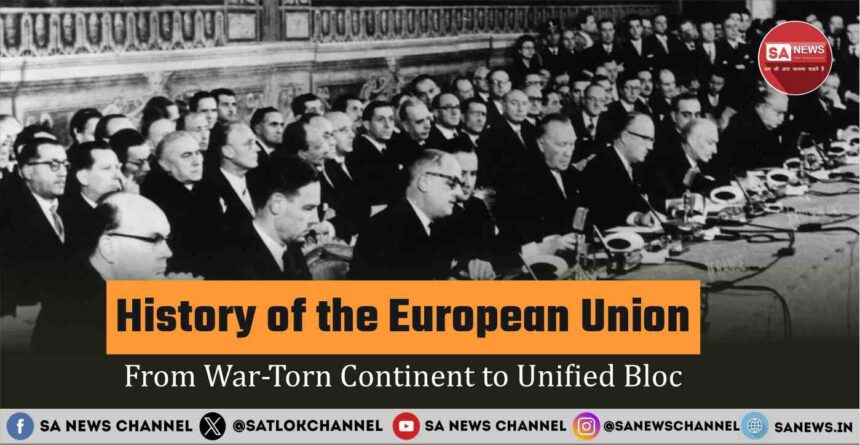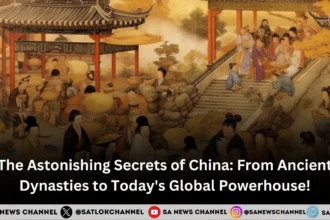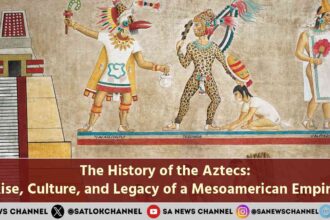History of the European Union: For much of history, Europe was fragmented. Rival monarchies, empires, and states competed fiercely for land and power. From the Thirty Years’ War (1618–1648) to the Napoleonic Wars (1803–1815), the continent was repeatedly engulfed in devastating conflicts. The 20th century intensified these divisions. Two World Wars tore apart Europe, causing mass destruction and leaving millions dead.
- Early Visions of Unity
- The First Steps: European Coal and Steel Community
- The Treaties of Rome: Birth of the EEC
- Expanding Membership and Challenges
- Toward Political Union: The Maastricht Treaty
- Key features of the treaty included:
- The Euro: A Bold Experiment
- Enlargement to the East
- Crises and Resilience
- The European Union Today
- Here’s an interesting fact about the European Union
- Unity Born from Struggle
- Spiritual Perception: Unity, Humanity, and the Higher Path
- FAQs on the history of the European Union
World War II, in particular, highlighted the dangers of nationalism, fascism, and unchecked militarism. By 1945, much of Europe lay in ruins. Economies collapsed, infrastructure was shattered, and political instability threatened to reignite violence. Against this backdrop, leaders and intellectuals began to push for cooperation that would secure peace and rebuild prosperity.
Early Visions of Unity
Even before WWII, ideas for a unified Europe had been floated. Philosophers like Immanuel Kant spoke of a federation of states to prevent perpetual war. After the war, however, these ideas gained urgency. Figures such as Winston Churchill, in his famous 1946 speech at Zurich University, called for the creation of a “United States of Europe.” Although Britain itself remained hesitant, continental leaders saw integration as the only path to lasting peace.
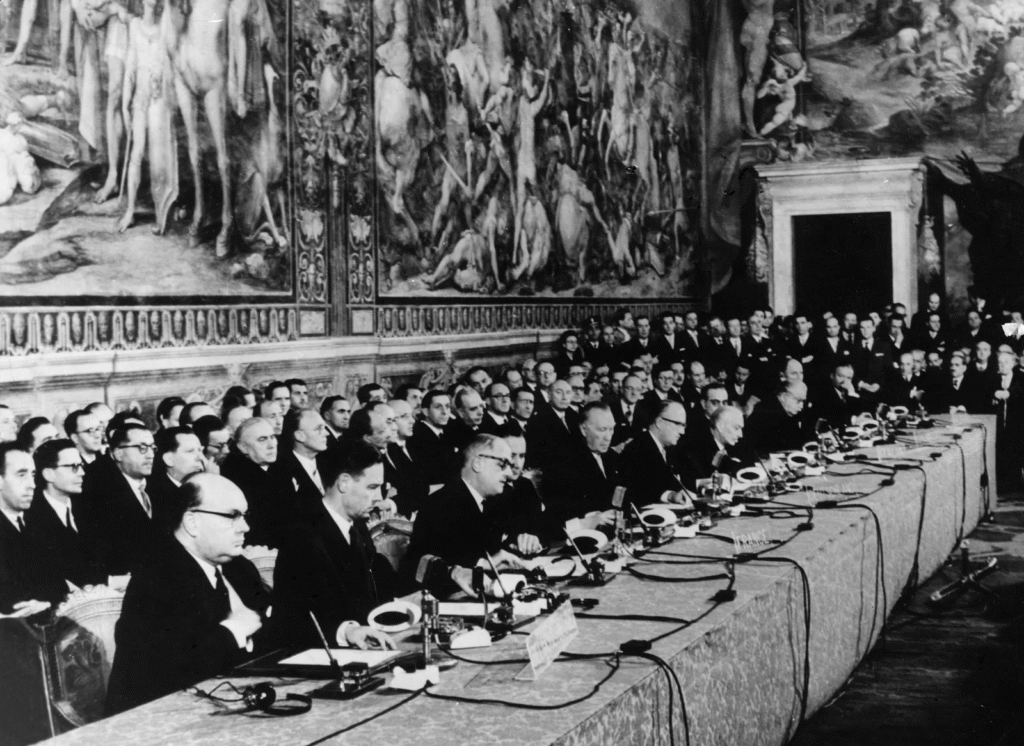
The concept was simple yet revolutionary: if European nations tied their economic and political interests together, war would become not only undesirable but materially impossible.
The First Steps: European Coal and Steel Community
The first concrete step came with the Schuman Declaration of May 9, 1950. Proposed by French foreign minister Robert Schuman and designed by Jean Monnet, the plan called for pooling French and German coal and steel production. These resources were the backbone of military power, and integrating them would ensure no single country could secretly build weapons for war.
The European Coal and Steel Community (ECSC) was established in 1951 by six nations: France, West Germany, Italy, Belgium, the Netherlands, and Luxembourg. It marked the beginning of institutionalized European integration. While initially economic, it carried immense political symbolism. Enemies of yesterday were now partners in rebuilding the future.
The Treaties of Rome: Birth of the EEC
Encouraged by the success of the ECSC, the six member states sought deeper ties. This culminated in the Treaties of Rome in 1957, creating two new bodies:
- The European Economic Community (EEC)
- The European Atomic Energy Community (EURATOM)
The EEC aimed at creating a common market where goods, services, people, and capital could move freely. Customs duties were gradually eliminated, trade barriers reduced, and economic cooperation intensified. EURATOM, meanwhile, promoted peaceful nuclear energy use.

This period laid the foundation for Europe’s economic miracle in the 1960s, as integration fostered growth and stability.
Expanding Membership and Challenges
Initially a Western European project, the Community soon expanded. Denmark, Ireland, and the United Kingdom joined in 1973, followed by Greece in 1981, and Spain and Portugal in 1986. Each enlargement symbolized the attraction of the European project, nations once under dictatorships or economic hardship sought security and prosperity within the bloc.
However, integration was not without challenges. Disputes over sovereignty, financial contributions, and agricultural policies often strained relations. The UK, for instance, negotiated special terms and later opted out of deeper union, foreshadowing future tensions.
Toward Political Union: The Maastricht Treaty
The end of the Cold War in the early 1990s created both opportunities and complexities. With the collapse of the Soviet Union, Eastern European nations looked westward for stability and partnership. To prepare for a more ambitious future, leaders signed the Maastricht Treaty in 1992, which officially created the European Union.
Key features of the treaty included:
- Plans for a single currency, the euro.
- Greater cooperation in foreign and security policy.
- Enhanced powers for the European Parliament.
The treaty transformed the Community from an economic arrangement into a political and social union, broadening its scope to include environment, health, and education.
The Euro: A Bold Experiment
Introduced in 1999 (and as physical notes and coins in 2002), the euro was a groundbreaking step. By replacing national currencies in many member states, it symbolized unprecedented unity. Today, 20 out of 27 EU countries use the euro.

While the currency facilitated trade, travel, and investment, it also posed challenges. The Eurozone debt crisis of 2009 revealed structural weaknesses, as nations like Greece, Spain, and Portugal struggled with debt while bound to strict monetary policies. Bailouts and austerity measures caused political tensions, yet the euro survived, proving the resilience of the Union.
Enlargement to the East
One of the EU’s proudest achievements has been its role in stabilizing post-communist Europe. In 2004, ten new members joined, including Poland, Hungary, the Czech Republic, and the Baltic states. Romania and Bulgaria followed in 2007, and Croatia in 2013.
Also Read: The India-European Union Free Trade Agreement: Strengthening Economic Ties for a Brighter Future
For these nations, EU membership meant economic growth, democratic consolidation, and international legitimacy. For the Union, enlargement reinforced its role as a force for peace and stability across the continent.
Crises and Resilience
Despite its successes, the EU has faced significant crises:
- The Eurozone Crisis (2009–2015): Tested financial solidarity.
- The Migration Crisis (2015): Sparked debates over asylum, borders, and solidarity among states.
- Brexit (2016): Marked the first time a member state, the United Kingdom, voted to leave the Union.
Brexit represented a major setback, raising questions about identity, sovereignty, and the future of integration. Yet, the Union demonstrated adaptability, continuing to move forward with renewed focus on unity among remaining members.
The European Union Today
Currently, the EU consists of 27 countries and represents nearly 450 million people. It stands as the largest single market in the world, a leader in climate policy, digital regulation, and human rights advocacy. Institutions like the European Commission, European Parliament, and European Court of Justice ensure governance across multiple sectors.
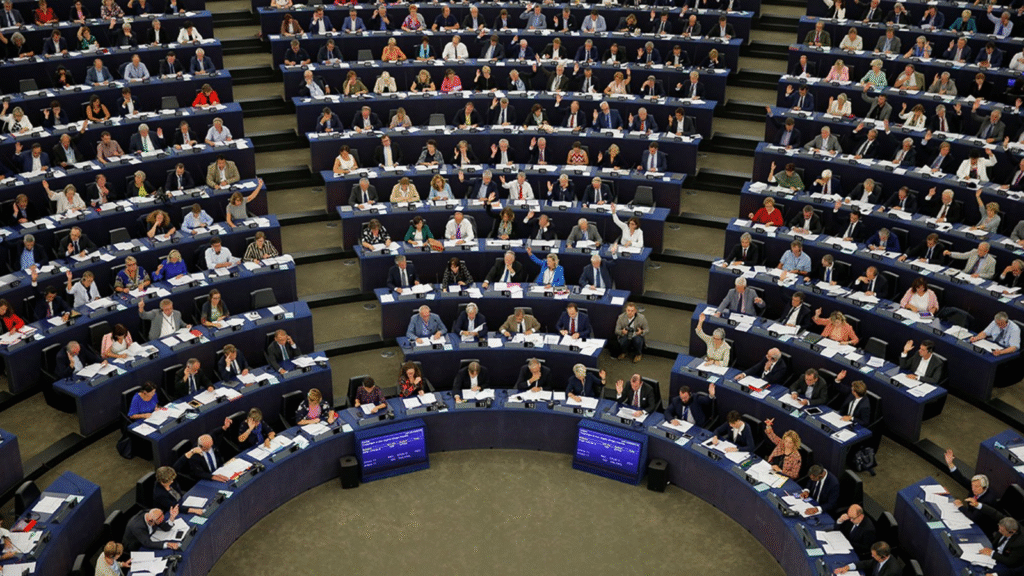
Its influence extends beyond economics. The EU plays a key role in diplomacy, humanitarian aid, and global initiatives like environmental protection. Even after Brexit, it remains a magnet for countries seeking stability and progress.
Here’s an interesting fact about the European Union
The European Union has its own anthem, flag, and motto, even though it is not a country. The anthem is based on Beethoven’s “Ode to Joy,” the flag features a circle of 12 golden stars on a blue background symbolizing unity, and the motto is “United in Diversity”, reflecting the EU’s commitment to cooperation among diverse nations.
Unity Born from Struggle
The history of the European Union demonstrates how determination, diplomacy, and shared interests can transform centuries of conflict into cooperation. Born from the ruins of World War II, the EU became a platform where countries learned to work together for mutual benefit. Through milestones such as the Treaties of Rome, Maastricht, and the adoption of the euro, the Union has continuously evolved. While not free from challenges, the EU stands as a remarkable achievement of collective will and vision.
Spiritual Perception: Unity, Humanity, and the Higher Path
The story of the European Union is not only political, it is deeply human. It demonstrates how adversaries can transform into allies when guided by higher principles of peace, cooperation, and justice. From a spiritual perspective, this reflects the universal truth that unity brings strength, while division breeds destruction.
As a Chyren Saint Rampal Ji Maharaj often emphasizes, true peace lies in eliminating enmity and embracing shared humanity. The EU’s journey, though incomplete and fraught with obstacles, shows how collective willpower can create harmony from discord. Just as individuals must rise above ego to find peace, nations too must rise above narrow nationalism to achieve lasting prosperity.
For deeper guidance on how humanity can achieve true unity and eternal peace, readers are requested to explore the teachings of Saint Rampal Ji Maharaj. His spiritual discourses, rooted in authentic scriptures, offer practical solutions for living in harmony. Visit the official website supremegod.org to learn more.
FAQs on the history of the European Union
1. What led to the creation of the European Union?
The European Union was created to ensure peace, stability, and economic cooperation in Europe after the devastation of World War II. Leaders sought to prevent future conflicts by uniting nations through shared economic and political institutions. The first step was the European Coal and Steel Community in 1951, which pooled resources critical for military power, ensuring collaboration between former rivals like France and Germany.
2. Which countries were the founding members of the EU?
The EU’s earliest predecessor, the European Coal and Steel Community (ECSC), was founded in 1951 by six countries: France, West Germany, Italy, Belgium, the Netherlands, and Luxembourg. These nations later signed the Treaties of Rome in 1957, creating the European Economic Community (EEC) and EURATOM, laying the groundwork for the modern European Union.
3. When was the European Union officially established?
The European Union was officially established with the Maastricht Treaty in 1992, which transformed the European Economic Community into a broader political and economic union. The treaty introduced the framework for a single currency (the euro), strengthened the powers of the European Parliament, and expanded cooperation in foreign policy, security, environment, and social policy.
4. How has the EU expanded over the years?
The EU has grown from the original six members to 27 countries today. Major waves of enlargement include:
- 1973: United Kingdom, Denmark, Ireland
- 1981: Greece
- 1986: Spain and Portugal
- 2004: Ten Eastern European countries including Poland and Hungary
- 2007: Romania and Bulgaria
- 2013: Croatia
Each expansion brought economic growth, political stability, and strengthened the EU’s influence globally.
5. What are the key milestones in the EU’s history?
Significant milestones include:
- 1951: European Coal and Steel Community
- 1957: Treaties of Rome creating the EEC and EURATOM
- 1992: Maastricht Treaty establishing the EU
- 1999–2002: Introduction of the euro
- 2004–2013: Eastern enlargement
- 2016: Brexit referendum, marking the UK’s departure
These events reflect the EU’s continuous evolution from a modest economic alliance to a major political and economic bloc.


